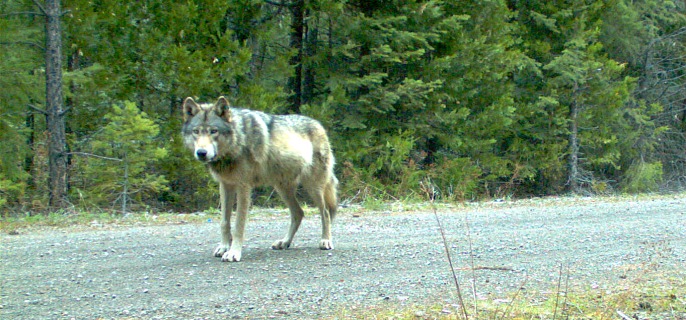
PHOTO COURTESY OF US FWS
[quote style=”2″]Six Pairs of Breeding Wolves Located in Eastern Oregon[/quote]
Oregon is moving to Phase II of its wolf recovery plan after wildlife biologists documented seven breeding pairs of wolves in Oregon in 2014.
Of nine known wolf packs, only the Imnaha Pack is not a breeding pair. The Umatilla River pack still needs to be surveyed.
A breeding pair is a pair of adult wolves which produce at least two pups that survive to the end of each year. Six of Oregon’s 2014 breeding pairs are in Eastern Oregon.
While surveys are not completed on all of Oregon’s wolves, confirmation of at least four breeding pairs for the third consecutive year in Eastern Oregon moves the eastern part of the state to Phase 2 of the state’s Wolf Conservation and Management Plan.
“This is an important step for Oregon,” said Russ Morgan, ODFW wolf coordinator. “Wolves have now met one of the initial milestones envisioned by the public and the Commission. In the past seven years, Oregon has gone from no known wolves, to resident and reproducing wolves, and now to meeting our conservation objective for the eastern part of the state.”
In addition to breeding pairs, the department documented four new pairs of wolves in 2014, including confirmation of a second wolf in the Keno Unit last week.
Changes for livestock producers east of Highways 395-78-95
Most known wolf activity, including eight of the nine known wolf packs, is east of Highways 395-78-95. This is the area of the state where wolves are also delisted from the federal Endangered Species Act.
Wolf-livestock conflict in this area is now managed under Phase 2 rules of the Oregon Wolf Plan. Non-lethal measures to prevent wolf-livestock conflict are still emphasized in Phase 2 but livestock producers now have more flexibility to protect their livestock. Specifically, producers in the easternmost portion of the state are allowed to take (shoot) a wolf caught chasing livestock under certain circumstances. More information is available online. Livestock producers are also encouraged to visit the Wolf-Livestock page and sign up for automatic Wolf-Livestock section email updates to get the latest information on wolves in their area.
West of Highways 395-78-95, wolves remain listed under the Federal Endangered Species Act and the U.S. Fish and Wildlife Service regulates all take and harassment of wolves where wolves are federally listed. The only known wolves in this area are the Rogue Pack (OR7) and two new wolves recently confirmed in the Keno Unit.
Next steps: Annual report, potential delisting of wolves from Oregon ESA
ODFW biologists are now working to finalize 2014 wolf population counts. Population surveys are nearly complete and the number of wolves may be updated through February as biologists continue to collect information. The 2014 population will be reported in March when ODFW publishes its annual wolf report.
The transition to Phase 2 also marks the initiation of the state delisting process in Oregon as outlined in the Wolf Plan. ODFW will begin conducting a full status review and will present the results of that review to the Fish and Wildlife Commission in April 2015. Delisting from the Oregon List of Endangered Species is a public process and the Commission could make their decision as early as June 2015.
“The Wolf Plan is working and the wolf population in Oregon expanding as the original crafters of the Plan thought it would,” said Brett Brownscombe, ODFW interim deputy director. “We should embrace this wildlife success as wolves’ return to the Oregon landscape and ensure management approaches are also in place to address the challenges that come with wolves.”
For more information on wolves in Oregon, visit the wolf section of the ODFW website.









